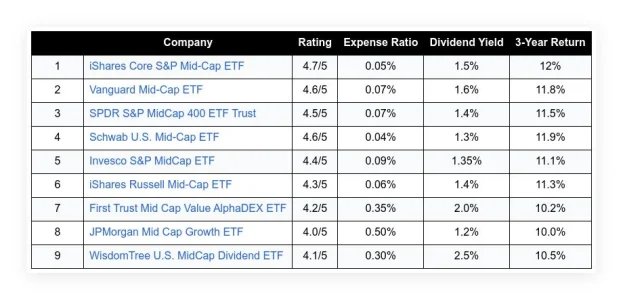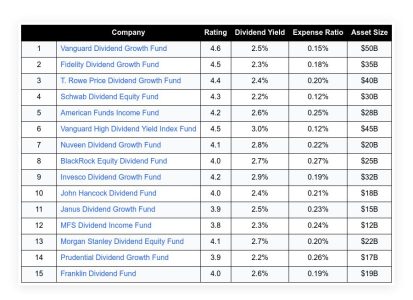When it comes to your retirement, you did everything right to be ready. You developed a retirement plan that took into account your lifestyle, health care, and potential bumps in the road. And, you went ahead and created a budget to ensure that your retirement plan would come to fruition. Do you have everything ready for retirement?
Table of Contents
ToggleWhat is an RMD and How Will it Help You Retire?
Everything seemed to be running smoothly until at age 72, when you have to worry about something called an RMD. But, what exactly is an RMD and how can it impact your retirement?
RMDs 101
RMD is short for the required minimum distribution and is the required amount of money you must withdraw from an employer-sponsored retirement plan that’s also tax-deferred. These investment accounts include:
- Traditional IRAs
- Rollover IRAs
- SIMPLE IRAs
- SEP IRAs
- Most small-business accounts (Keoghs)
- Most 401(k) and 403(b) plans
If you have any of these accounts, then annual withdrawals must be made once you reach age 72 — or if you turned 70½ in 2019. Please, also note, that the CARES Act that was passed in 2020 suspended RMDs. However, that one-year hiatus is over, so people who are currently 72 or older must resume or start RMDs by the end of the year if they want to avoid getting penalized.
How severe are RMD penalties? Well, according to the IRS, “If an account owner fails to withdraw an RMD, fails to withdraw the full amount of the RMD, or fails to withdraw the RMD by the applicable deadline — the amount not withdrawn is taxed at 50%.”
The good news is that you won’t have to worry about such a substantial penalty if you take the right precautions.
What are the Right Precautions?
The first step is calculating your RMD. In most cases, this is simply dividing your tax-deferred retirement account balance as of December 31 of last year by your life expectancy factor. The IRS has a handy worksheet that you can also use to figure this out. Usually, this is the responsibility of the IRA custodian or retirement plan administrator to calculate the RMD.
Once you’ve calculated your RMD, work with a financial advisor to help you select a strategy that can reduce the effect of RMDs on your taxes so that you can maximize your retirement income. If you want to get the ball rolling, though, consider the following 7 strategies to help ease your burden.
1. Take withdrawals earlier.
To be specific, age 59½. It’s at this age when you can withdraw funds from a tax-deferred account without getting hit with a 10% penalty. Also, as explained by Charles Schwab, “although not so much that you edge yourself into a higher tax bracket.”
Going with this “strategy can reduce the overall size of your tax-deferred accounts, and with them your RMDs once you turn 70½ (or 72 if you’re subject to the new rules),” adds Schwab. “Such withdrawals can also help make it possible to defer claiming your Social Security benefits, which increases 8% for every year you wait to collect beyond your full retirement age (up to age 70, after which there is no incremental benefit).”
2. Rollover to a Roth IRA.
Do you have a Roth IRA or 401(k)? If so, you may want to consider converting some of your savings into a Roth IRA.
As with Roth 401(k) plans, “savers make their contributions with after-tax dollars,” we’ve previously explained. “They’ll pay tax on their income, then put money into their Roth IRA. Those funds continue to grow and the distributions are tax-free.”
Generally, this type of plan is preferable for those “who expect to have a higher income after they retire than when they make their contributions.”
In regards to RMDs, if you’re the original owner, there aren’t any required distributions. And, if you’ve had a Roth IRA for at least 5 years and are over 59½, the money you roll over can be tapped tax-free.
Be aware, however, that this will not lower your taxable income. But, you don’t have to pay taxes on withdrawals.
“Converting IRA money to a Roth is a great strategy to start early, but you can do conversions even after you turn 72, though you must take your RMD first,” write Jackie Stewart and Rachel L. Sheedy, the Editors of Kiplinger’s Retirement Report. Then you can convert all or part of the remaining balance to a Roth IRA. You can smooth out the conversion tax bill by converting smaller amounts over a number of years.
“This can help you prevent paying more in taxes in the future,” added Stewart and Sheedy. “For instance, while traditional IRA distributions count when calculating taxation of Social Security benefits and Medicare premium surcharges for high-income taxpayers, Roth IRA distributions do not. And if you need extra income unexpectedly, tapping your Roth won’t increase your taxable income.”
3. Keep working.
Here’s a secret that the IRS doesn’t want you to know. The IRS uses RMDs to cash in on previously taxed income. But, there is a legitimate way to get around this — keep working.
Let’s say that you have a 401(k) and are still in the workforce past age 72, or don’t own 5% of a company, then distributions from your 401(k) can be delayed.
Please take note that this is only applicable to your 401(k) at the company where you currently work. If you’ve switched employers and have a previous IRA or a 401(k) — you still need to adhere to the RMD rule. If not, you’ll face a hefty penalty, which again is a staggering 50% of the required distribution.
Furthermore, if you’re able to continue working and it’s something that you still enjoy, you’ll be eligible for health insurance benefits. You’ll also have financial stability. And, continuing to work will keep you mentally, emotionally, and physically sharp.
4. Donate your RMD.
Donating to charity makes you feel better, brings more meaning into your life, and can inspire others to do the same. You can also receive a tax deduction. But, did you know that you can donate your RMD to a qualified charity?
While this doesn’t apply to 401(k)s, if you have an IRA and are 70 ½ or older, you can transfer up to $100,000 directly to charity annually. Besides assisting those in need, this move can save on paying taxes as it doesn’t count towards your adjusted gross income.
5. Consider a qualified longevity annuity contract.
In 2014, the U.S. Treasury Department permitted IRA owners and qualified plan participants to purchase a qualified longevity annuity contract. Shortened to QLAC, this lets you fund an annuity from assets that you already have stashed in a longevity annuity contract, such as an IRA or pension.
Why would you want to do this? Well, it guarantees that you’ll receive monthly payments for the rest of your life. And, you can also defer your RMDs until the age of 85.
“A QLAC allows you to defer your RMDs when you do not need the income,” says Carol Goetsch, senior product manager, annuities, and insurance, at RBC Wealth Management-U.S. And, while the money doesn’t grow in a QLAC, it also doesn’t go down.
Moreover, this can reduce a person’s required minimum distributions. As a result, you can remain in a lower tax bracket and avoid a higher Medicare premium.
Just be aware that the IRS limits contributions to 25% of the IRA assets, up to a maximum of $130,000.
6. Purchase a variable annuity.
At Due, we’ve defined variable annuity as;
“A type of annuity contract that permits the owner to allocate the premium amount among several different smaller investment choices such as stocks and bonds. Also known as sub-accounts, the contract value will fluctuate depending on the value and performance of investments. of such a plan may vary according to the performance of these investments.”
“A variable annuity is similar in concept to a mutual fund,” explains Goetsch. In “that finance professionals manage the funds and the value of the investment can go up and down.” Although there are risks involved, variable annuities are tax-deferred and cost roughly 2-2.5 percent of the total amount invested. And, you can also add a death benefit.
With “a death benefit rider which guarantees that the beneficiaries will get at least the amount invested,” adds Goetsch. That means it will continue to grow tax-free as long as you live. When do you pass, however, your beneficiaries will receive at least some of the assets that you’ve put in.
7. Pay your taxes.
“You can also use your RMD to simplify tax payments,” state Stewart and Sheedy. With the ‘RMD solution,’ you can ask your IRA custodian to withhold enough money from your RMD to pay your entire tax bill on all your income sources for the year.” As a result, this saves “you the hassle of making quarterly estimated tax payments and can help you avoid underpayment penalties.”
“Because withholding is considered to be evenly paid throughout the year, this strategy works even if you wait to take your RMD in December,” they add. “By waiting until later in the year to take the RMD, you’ll have a better estimate of your actual tax bill and can fine-tune how much to withhold to cover that bill.”

















